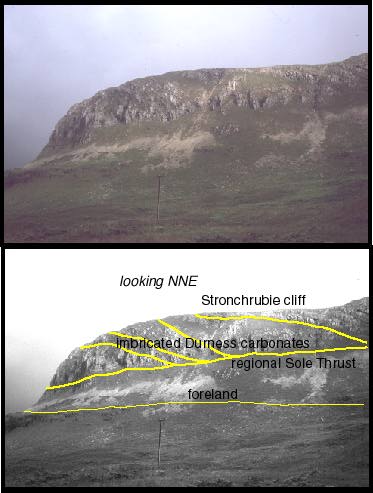Stronchrubie cliff

The A837 just south of Inchnadamph runs along a bench of poorly exposed ground unfortunately characteristic of the underlying Fucoid Beds. These strata together with the overlying Salterella Grit, form the upper part of the undeformed foreland Cambro-Ordovician succession. Above and east of the road is the 120m high escarpment of Stronchrubie Cliff that provides a continuous section, 2km across. The lower part of the escarpment contains the lowest part of the Durness Group. Grudaidh Formation dolomites together with a laterally continuous sill of vogesite (hornblende-rich lamprophyre) dip gently ESE in the footwall to the Sole Thrust. In contrast, the upper part of the cliff contains carbonates of the Eilean Dubh Formation that dip at 50°-60° ESE. The relationship between these dip domains is clearest on the northern wall of a broad natural amphitheatre shown above. Individual thrusts may be inferred by identifying bedding cut-offs. Higher thrust slices can be traced, folded by underlying imbricates. This relationship is indicative of piggy-back thrusting.